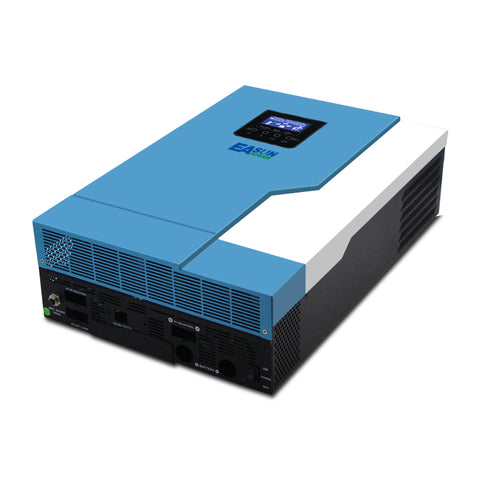
How do solar inverters convert light energy into usable electricity?
Solar energy, derived from the abundant and renewable source of sunlight, has become an increasingly popular and sustainable means of generating electricity. At the heart of every solar power system lies a crucial component known as a solar inverter. Solar inverters play a pivotal role in converting the captured sunlight into usable electricity that can power homes, businesses, and more. In this article, we will explore the intricate process through which solar inverters transform light energy into electricity and delve into their significance in the realm of renewable energy.
1. Photovoltaic Cells: The Starting Point
The journey of converting light energy into electricity begins with photovoltaic (PV) cells. PV cells, commonly referred to as solar cells, are made from semiconductor materials like silicon. When sunlight strikes these cells, it excites electrons within the material, generating a flow of direct current (DC) electricity. However, the electricity generated by PV cells is in the form of DC, which is not directly usable for most conventional appliances and devices. This is where the role of the solar inverter becomes crucial.
2. The Role of the Solar Inverter
A solar inverter acts as the bridge between the DC electricity produced by the PV cells and the alternating current (AC) electricity required to power everyday devices. AC electricity is the standard form of electrical power used in homes and businesses. The solar inverter's primary function is to convert the DC electricity generated by the PV cells into AC electricity that can be seamlessly integrated into the existing electrical grid.
3. Inverter Operation: From DC to AC
The process of converting DC to AC involves several steps within the solar inverter:
a. Rectification: The solar inverter initially converts the incoming DC electricity into an intermediate form of AC known as a square wave or modified sine wave.
b. Pulse Width Modulation (PWM): The square wave is further refined using pulse width modulation techniques. This process adjusts the width of the wave's pulses to create a smoother AC waveform, resembling a true sine wave.
c. Synchronization with Grid: The solar inverter synchronizes its AC waveform with the frequency and phase of the utility grid's AC electricity.
d. Conversion to True Sine Wave: High-quality solar inverters then convert the modified AC waveform into a pure sine wave, which closely resembles the waveform of utility grid power. This ensures compatibility with a wide range of electrical devices.

4. Benefits and Implications
Solar inverters bring forth several benefits and implications for the integration of solar energy:
a. Grid Compatibility: By converting DC to AC, solar inverters enable seamless integration of solar-generated electricity into the utility grid, allowing excess energy to be fed back into the grid during times of high production.
b. Energy Independence: Solar inverters empower individuals and businesses to generate their electricity, reducing reliance on non-renewable energy sources and contributing to energy independence.
c. Efficiency Enhancement: Advanced solar inverters incorporate Maximum Power Point Tracking (MPPT) algorithms that optimize the efficiency of the PV cells by ensuring they operate at their maximum power output.
d. Energy Management: Some solar inverters feature smart capabilities that allow users to monitor energy production and consumption, enabling better energy management and cost savings.
Conclusion
Solar inverters play a pivotal role in the transformation of light energy from the sun into usable electricity. Through a series of sophisticated processes, these devices convert DC electricity produced by PV cells into AC electricity compatible with conventional power grids and electrical devices. The integration of solar inverters into solar power systems not only facilitates renewable energy adoption but also paves the way for a more sustainable and energy-efficient future. As solar technology continues to advance, solar inverters will remain a cornerstone of the renewable energy landscape, driving us toward a cleaner and greener energy future.

Leave a comment